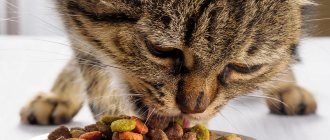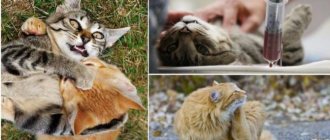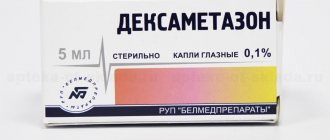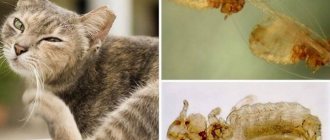What is glomerulonephritis?
Glomerulonephritis is a kidney disease in cats that affects their glomerular apparatus. The inflammatory process develops against the background of damage to the glomerular structures. This may occur, for example, due to damage to the basement membrane by harmful bacteria. Due to some factor (such as cooling), an allergic reaction is triggered in the body, as a result of which immune complexes appear, to which complement attaches. These complexes settle on the membrane tissues, causing damage to the glomeruli. As a result, lysosomes are damaged, the coagulation system is activated, disturbances appear in the microcirculatory system, which leads to immune inflammation of the renal apparatus.
Pathogenesis
The immunological mechanisms of damage to the glomeruli are associated with the formation of specific antibodies that interact with antigens (exogenous - drugs, foreign proteins of microbes, viruses and protozoa) or (endogenous - DNA, antigen of the nuclei and ribosomes of cells, elements of the glomerular basement membrane), with the formation of immune complexes antigen - antibody. Immune complexes, circulating in the blood, are excreted through the glomerular filter and getting stuck in it, causing damage to the kidney tissue.
Causes of nephritis in cats
Acute and subacute forms can develop for a variety of reasons. Most often this occurs due to infectious pathogens: leptospira, streptococci, pneumococci, Pseudomonas aeruginosa, hepatitis, enteroviruses and others. Much depends on the allergic reaction that occurs due to the negative effects of microorganisms.
The condition can also develop due to:
- exposure to nephrotoxins (eg, heavy metals, turpentine, fertilizers, poisonous plants);
- improper and unbalanced nutrition;
- unsuitable living conditions (cold and humidity in the house);
- swimming in cold water;
- heavy physical activity;
- organ trauma;
- uncontrolled use of vaccines, antibiotics and other medicines.
Another reason may be untreated kidney pathology or its relapse.
Symptoms of kidney disease in cats
Since the symptoms are very diverse, the signs of kidney disease in cats are combined into syndromes with the following symptoms:
Acute glomerular inflammation syndrome:
- pain in the back, lower back and sides of the abdomen;
- elevated temperature;
- oliguria;
- blood in the urine;
- the presence of protein in the urine;
- micro- or macrohematuria;
- leukocytosis;
- increased erythrocyte sedimentation rate.
Cardiovascular syndrome:
- dyspnea;
- swelling of the lungs;
- bradycardia;
- arterial hypertension;
- acute left ventricular failure (rare);
- narrowed arterioles;
- point-like hemorrhages in the fundus of the eye.
Edema syndrome:
- swelling in the area of the muzzle or eyelids;
- hydrothorax (extremely rare);
- hydropericardium (with late diagnosis);
- ascites.
Cerebral syndrome manifests itself:
- vomiting;
- general weakness;
- motor disorder;
- decreased hearing and vision;
- restless sleep.
- If the condition is diagnosed late, your pet may experience eclampsia. The complication is expressed by loss of consciousness, cyanosis of the mucous membranes, noisy breathing, high blood pressure and other symptoms, and often ends in death.
Symptoms
Obvious signs of the causes of weight loss are the cat's behavior: increased appetite or refusal to eat, activity, and the age of the cat.
- Polyphagia (increased appetite) or anorexia (loss of appetite)
- Cat's bad breath
- Increased thirst and urination
- Changes in feces (watery, greasy, foamy, diarrhea, black and tarry)
- Vomit
- Changes in coat condition
- Increase or decrease activity
- Poor wound healing
- Behavioral changes such as depression, inactivity, prolonged sleep.
Diagnosis of nephritis
Primary diagnosis begins with collecting a history of symptoms. This, along with a physical examination, helps distinguish nephritis in cats from urinary tract diseases, cirrhosis, inflammatory bowel disease and nephropathy. To confirm the primary diagnosis, the animal is prescribed additional tests:
- A urine test that shows proteinuria.
- Blood test detecting hypoalbuminemia and hypercholesterolemia.
- Electrophoresis of urinary proteins and blood serum, establishing the cause of proteinuria.
- An X-ray of the abdominal cavity, which helps to screen out other presumptive diagnoses.
- Percutaneous kidney biopsy, which is performed under ultrasound guidance.
The last study is the most accurate, but has contraindications, namely: absence of a second kidney, poor blood clotting, hydronephrosis, cyst in the organ.
Causes of kidney diseases:
Often it is not possible to accurately determine the causes of the disease. The most typical are: age, genetic predisposition or congenital anomaly, ecology, infectious and systemic diseases (for example, diabetes), poisoning, trauma, unbalanced nutrition.
All animals over 7 years of age are at risk. They should be examined annually by a veterinarian, have blood tests, urine tests, ultrasounds and blood pressure checked.
Types of glomerulonephritis
Kidney disease in cats varies in forms:
- Membranous. It is characterized by thickening of the capillary walls, which is caused by damage to the basement membrane.
- Proliferative. Characterized by the proliferation of mesangial cells.
- Membranous-proliferative. The most severe form, since it combines 2 types of lesions.
The disease is also divided depending on the duration and speed of its development into acute, subacute and chronic types. Acute - characterized by the fact that it begins abruptly, the symptoms are pronounced, and the animal’s condition quickly deteriorates. At the first stages, the subacute type is asymptomatic, gradually gaining momentum, and can become chronic. The latter can last for years, while becoming aggravated by periods. During exacerbations, the chronic type has symptoms similar to the acute one.
Despite the fact that glomerulonephritis in cats is a serious disease, it is treatable and preventable. If you take care of your pet, this problem can be avoided. Source: Flickr (Sergey Samoilov)
Causes of weight loss
There are many possible reasons for weight loss. They are divided into acute (sudden), chronic (slow and progressive) and other reasons for which weight loss is a sign of a disease or conditions of detention.
Acute causes of weight loss:
— Acute kidney disease.
The result of decreased function of the organ responsible for removing toxins from the body.
— Infection.
Bacterial, protozoal and viral infections can lead to acute weight loss due to anorexia and/or vomiting and diarrhea.
Chronic causes of weight loss:
— C chronic kidney disease.
Kidney disease leads to decreased function of the organ, which provokes the formation of toxins in the body.
— Addison's disease (hypoadrenocorticism)
An endocrine disease in which chronic insufficiency of the adrenal cortex leads to a deficiency of hormones, especially cortisol.
- Diabetes
An endocrine disease of the pancreas, which is responsible for the production of two hormones - insulin and glucagon, which regulate the level of glucose (sugar) in the blood.
- Exocrine pancreatic insufficiency.
A disorder caused by the pancreas not producing enough enzymes needed to digest complex food components such as proteins, triglycerides and complex carbohydrates, as well as large amounts of bicarbonates, which protect the lining of the organs from the effects of stomach acid.
— Feline immunodeficiency virus
A viral infection similar to HIV in humans.
— Hyperthyroidism
Hyperthyroidism is almost always caused by a benign tumor of the thyroid gland that overproduces hormones. This is a common cause of weight loss in middle-aged and older cats.
— Hypertrophic cardiomyopathy
Thickening of the wall of the left ventricle of the heart. This is a consequence of diseases such as hyperthyroidism or high blood pressure.
– Inflammatory bowel disease
— Liver disease
Other reasons for weight loss:
— Cancer is a malignant tumor.
Cancer is more common in older and older cats and is a leading cause of weight loss.
— Dental problems
Stomatitis, dental abscess, etc., which leads to reluctance to eat food and causes anorexia.
— Dietary reasons
Insufficient caloric intake (malnutrition), which can be caused by food quality, not enough food, a dominant cat eating most of the food, etc.
— Infectious anemia of cats (hemobartonellosis)
The disease is caused by an unusual type of bacteria that attaches to the wall of red blood cells, destroying them in the process.
— Feline leukemia virus (FeLV)
A disease that is caused by a retrovirus that belongs to the same family as the feline immunodeficiency virus. Destroys the immune system and causes cancer.
- Stomach ulcer
— Glomerulonephritis
A disease caused by inflammation of the nephrons in the kidneys.
— Heartworm
— Pancreatitis is inflammation of the pancreas.
— Pregnancy and lactation
If caloric adjustments are not made to the cat's diet during this period of her life, she will lose weight.
— Stress or depression
A change of place of residence (travel), a new family member, the loss of a beloved family member - all this causes stress and depression, which can be reflected in a cat’s reluctance to eat.
Treatment of nephritis in cats
Before proceeding with the main methods of treatment, it is necessary to normalize the maintenance and diet of the pet.
It is important to provide him with a warm and dry place without drafts. Walking is strictly prohibited. It is also important to pay special attention to brushing the coat, rubbing and massaging the area of inflamed organs.
As for diet, it is recommended to keep the animal hungry during the first 2 days of an acute type of illness. Then you can give him unsalted and easily digestible food (for example, porridge, vegetables, dairy products). The offered food should be rich in carbohydrates and calcium (as well as its ions), since this composition has a diuretic effect and normalizes myocardial function. To maintain immunity and normalize the condition, it is recommended to give your pet multivitamins, supplements or products containing retinol, B vitamins, tocopherol and ascorbic acid.
When the acute form develops on the basis of an infectious exacerbation, the animal is prescribed antibiotics (ampiox, oxacillin, cephalosporin or aminoglycosides). Fotum, kefzol, klaforan and their analogues have a more gentle therapeutic effect. Together with these drugs, 5-NOK, palin or sulfonamides are prescribed.
If the patient has severe intoxication, then it is necessary to use:
- bloodletting;
- 20% glucose solution in a dosage of 10-100 ml subcutaneously.
- Magnesium sulfate should be used with caution. It removes salt from the body, lowers blood pressure, dilates blood vessels and has a diuretic property. It must be administered intramuscularly in 0.11 mm doses. To prepare the injection, mix a 10% solution of magnesia with a 5% solution of novocaine. Course: 1-3 weeks, 2-3 injections per day.
Symptomatic therapy is also used. Adrenergic blockers, anabolic steroids, narcotic painkillers, diuretics and vasodilators are used for it.
Diagnosis
To accurately diagnose glomerulonephritis, a kidney biopsy is necessary. In most cases, a urine test is sufficient to make only a preliminary, presumptive diagnosis. In this case, a sharply increased level of protein in the urine (proteinuria) is detected. Often the urine will also contain hyaline casts, which are ideal "imprints" of the renal tubules. Their detection indicates severe kidney pathologies (not only glomerulonephritis).
Urine culture is useful in identifying bladder infection as a cause of proteinuria. In addition, it is necessary to analyze the ratio of plasma protein and creatine. If it is disrupted, then there is 100% something very wrong with the kidneys.
Glomerulonephritis is an inflammatory kidney disease characterized by predominant damage to the glomerular nephron apparatus.
Etiology:
It is mainly of an infectious-allergic nature, most often developing after an infection caused by hemolytic streptococcus. There are acute and chronic glomerulonophritis. The provoking factor is often hypothermia and being kept in a damp room.
Pathogenesis:
The development of these diseases is based on the deposition or formation of immune complexes on the basement membrane of the renal glomeruli. In animals with idiopathic glomerulonephritis (50% of cases), a classic clinical picture of renal lesions is observed, accompanied by hematuria, proteinuria and oliguria. Severe proteinuria accompanying chronic glomerulonephritis also reflects nephrotic syndrome with hypoalbuminemia, generalized edema and hypercholesterolemia. Feline infectious peritonitis, systemic lupus erythematosus, leishmaniasis and canine babesiosis are diseases in which deposition of immune complexes in the glomeruli contributes to chronic infection.
Symptoms and course:
According to the course, acute, subacute and, less commonly, chronic glomerulonephritis is distinguished, which lasts for months and years, periodically exacerbating, resembling the acute form.
Clinical signs are very diverse, so they are usually combined into syndromes.
Acute glomerular inflammation syndrome: pain in the back and lower back on both sides of the animal’s abdomen; increase in body temperature to 40°C and above; oliguria (small amount of urine when urinating); reddish color of urine or the color of “meat slop”, sometimes streaked with blood; proteinuria (protein in the urine), microhematuria (less commonly macrohematuria); the appearance of casts (hyaline, granular, erythrocytes), epithelial cells in the urine; decreased glomerular filtration rate; leukocytosis, increased ESR; increased levels of alpha and gamma globulins in the blood).
Complications arising from glomerulonephritis include: acute cardiovascular failure (left ventricular failure, cardiac pulmonary edema); eclampsia (loss of consciousness, clonic and tonic convulsions); bleeding in the brain; acute visual impairment (sometimes blindness due to spasm and swelling of the retina).
Pathomorphological changes such as coagulated protein, red blood cells, fibrin fibers and proliferation of epithelial cells in the capsule are found.
Acute glomerulonephritis is detected on the basis of the following clinical data: the color of the urine is meat slop, pain in the kidney area on both sides, and oliguria. The diagnosis is helped by identifying protein, red blood cells and casts in the urine.
Treatment. First of all, it is necessary to normalize the maintenance and feeding of sick dogs. They must be placed in a warm, dry, draft-free room; walking patients is often prohibited. Provide thorough skin care - cleansing with rubbing and massage. During the first two days of the disease, fasting is recommended, then a limited amount of easily digestible, salt-poor food is prescribed - lactic acid, cereals from various cereals, boiled and raw vegetables and fruits. Feed should contain more carbohydrates and an increased amount of potassium and calcium ions, which have a diuretic, hypotensive effect, and stimulate myocardial contractile function. The diet should include ascorbic acid, retinol, tocopherol and B vitamins.
If acute glomerulonephritis has developed against the background of a general infection or due to an exacerbation of a focal infection, it is necessary to use antibiotics - fluoroquinolones, penicillins, cephalosporins, aminoglycosides, etc.
To stimulate diuresis and relieve hypertension, the following are widely used: Temisal 0.1-1 g 3-4 times a day; veroshpiron 0.025-0.1 g in 2-4 doses; furosemide intramuscularly or intravenously 10-50 mg once a day (preferably in the morning) for 7-10 days, and in case of severe renal failure the dose is increased to 120 mg 1-2 times a day for a week, as well as decoctions and infusions of bearberry , half-finger, juniper fruits, blue cornflower flowers, lingonberry leaves, etc.
Care should be taken to use solutions of magnesium sulfate. It is a salt-removing, blood pressure-lowering, vasodilator and diuretic. It is administered intramuscularly to cats 0.1-1 ml, to dogs 0.5-5 ml in the form of 10-25% solutions with an equal amount of 0.5% novocaine solution 2-3 times a day for one or three weeks.
Treatment regimens for glomerulonephritis: as anti-inflammatory, desensitizing and antiallergic, it is necessary to include glucocorticoids - cortisone acetate intramuscularly up to 0.01-0.025 g 1-2 times a day; hydrocortisone according to instructions; prednisolone orally 0.01-0.025 g 1-2 times a day; hydrocortisone according to instructions; prednisolone orally 0.01-0.025 g/day (in 2-3 doses), then the dose is reduced to 0.005-0.01 g; intravenously or intramuscularly in dogs, 0.2-1 ml 2-3 times a day, then the dose is gradually reduced.
To relieve attacks of renal colic and the inflammatory process, cystone, indomethacin, baralgin, spazgan, no-shpu and other analgesics and antispasmodics are used according to the annotation.
If blood or red blood cells appear in the urine sediment, it is necessary to use specific hemostatic and blood-clotting medications: aminocaproic acid at the rate of OD g/kg of animal weight every 4-6 hours intravenously (drip) up to 50-100 ml of a 5% solution per injection; vikasol orally 0.01-0.3 g/day or intramuscularly (intravenously) 0.2-1 ml of 1% solution 2-3 times a day for 3-4 days in a row; dicinone intravenously or intramuscularly, 0.3-2 ml of a 12.5% solution 1-3 times a day until recovery, as well as a 10% solution of gluconate and calcium chloride intravenously 1-2 times a day, 1-10 ml for one introduction.
Symptomatic therapy sometimes includes narcotic, anabolic agents, adrenergic blockers, etc.
Phytotherapy.
Plants with anti-inflammatory, anti-allergic, diuretic properties are used: strawberry leaf, nettle leaf, birch leaf, flaxseed, steelberry root, hop cones, bearberry leaf, rose hips, juniper - infusions and decoctions. Good results are obtained with the use of the drug phytoelite healthy kidneys.
Prevention.
It is necessary to make a timely and correct diagnosis with a mandatory laboratory test of urine, identify and eliminate the cause of the disease. During treatment, hypothermia of animals and the entry of toxic and irritating substances into their bodies with food, water or medications are not allowed.
This is a rapidly occurring infectious-allergic inflammation of the kidneys with predominant damage to the vessels of the glomeruli and the transition of inflammation to the interstitial tissue. Nephritis accounts for 57% of all kidney diseases. Acute nephritis develops after viral or bacterial infections, as well as with leptospirosis. The causative agents are leptospira, viruses, staphylococci, hemolytic streptococci, which are introduced into the kidneys by hematogenous route. Foci of chronic infection (ulcerative necrotic periodontal disease, tonsillitis, pyometra) play a great role in the development of nephritis. Viruses and bacteria cause primary damage to kidney tissue during infection. The altered proteins, acting as antigens, stimulate the production of appropriate antibodies in the reticuloendothelial system. The latter, entering into complex formation with antigens, are fixed in the renal glomeruli, causing severe secondary damage to them. Inflammation spreads to the interstitial tissue (interstitial nephritis), tubules, and walls of the pelvis, generally covering the entire kidney. In acute diffuse glomerulonephritis, both kidneys are always affected and all glomeruli are equally affected. In addition, the vessels of other organs and tissues are involved in the process. Nephritis, therefore, is a general vascular lesion in which urinary dysfunction predominates.
Symptoms. The acute phase of glomerulonephritis is characterized by oliguria (with externally frequent urination), hematuria and proteinuria. Clinically, such animals exhibit elevated temperature, violent vomiting and short-term paresis of the pelvic limbs. X-rays reveal bilateral enlargement of the kidneys. Damage to the glomeruli of the kidney is indicated by an increased content of red blood cells in the urine sediment. The involvement of interstitial tissue is indicated by a large number of deukocytes and bacteria. Changes in the renal tubular system are characterized by more frequent discharge of all types of urinary casts. Hematuria can be so severe that the urine turns the color of meat slop. In very severe cases of acute diffuse glomerulonephritis, the animal develops anuria with azotemia and tonic-clonic convulsions. In this case, the values of urea and creatinine in the blood serum rise to 25 mmol/l and 265 µmol/l. Acute glomerulonephritis lasts no more than two weeks and often ends in death.
Summary clinic: 1. Anorexia (lack of appetite, refusal to eat); 2. Ascites, accumulation of fluid in the abdominal cavity; 3. Auscultation of the heart: muffled, decreased heart sounds; 4. Auscultation: Reduced, dull pulmonary sounds, absence of sounds; 5. Pallor of visible mucous membranes; 6. Fatigue during physical exercise. load; 7. Tousled fur; 8. Generalized weakness; 9. Generalized lameness, stiffness of movement; 10. Hypothermia; 11. Dehydration; 12. Diarrhea, diarrhea; 13. Abdominal distension; 14. Slow growth; 15. Ulcerations, vesicles, pustules, erosions in the oral cavity; 16. Bad breath, Halitosis; 17. Swelling of the skin; 18. Palpation: decrease in kidney size; 19. Palpable enlargement of the kidneys; 20. Polydipsia, increased thirst; 21. Polyuria, increased volume of urination; 22. Loss of body weight 23. Weight loss, cachexia, general exhaustion; 24. Swelling in the head, face, ears, nose, jaws; 25. Swelling in the chest area; 26. Vomiting, regurgitation, emesis; 27. Tachycardia, increased heart rate; 28. Depression (depression, lethargy); 29. Urinalysis: Hematuria; 30. Urinalysis: Proteinuria; 31. Cold skin, ears, limbs; 32. Lameness of the hind limbs; 33. Lameness of the forelimbs;
Differential diagnosis of forms of nephritis is carried out on the basis of laboratory tests of urine and blood. If leptospirosis is suspected, blood serum is examined serologically, but not earlier than the 7-12th day of illness (sufficient antibody titer!).
Treatment. A diet rich in protein, cephalosporin antibiotics (if urea readings in the blood are above 25 mmol/l, only nitrofuran drugs!), prednisolone, aminophylline and strophanthin are prescribed. In cases of severe oliguria, mannitol and rheopolyglucin are administered intravenously. For azotemia, peritoneal dialysis is performed.
Peritoneal dialysis technique. The animal is given general anesthesia and laparocentesis. 0.25-2 liters of 20% glucose solution with hemodesis is administered intraperitoneally in a ratio of 20:1. Aspirate the fluid from the abdominal cavity 20-30 minutes after administration (remove as completely as possible). Monitor diuresis. Peritoneal dialysis for acute diffuse glomerulonephritis allows you to survive the unfavorable period of decreased kidney function. If necessary, it is carried out twice until diuresis is restored. Repeated examinations after 1-2 days.
Prevention of glomerulonephritis in cats
The basis of preventive measures is to ensure a healthy lifestyle for the animal. It is important to ensure that your pet does not become overcooled, spends time in comfortable conditions and eats properly. Specific prevention consists of:
- control of blood pressure and body weight, which allows you to track the pathological process;
- visiting a veterinarian once every 6 months;
- ensuring a competent drinking regime;
- taking multivitamins or supplements.
If the risk of developing the disease is high, then it is necessary to prevent the animal from mating, since this can lead to termination of pregnancy and death.
Etiology:
1. Infectious processes: bacterial, viral and parasitic.
2. Non-infectious causes: toxic damage, allergic processes, post-vaccination complications.
3. Systemic diseases: systemic lupus erythematosus (SLE).
4. A serious risk factor for the development of glomerulonephritis is hypothermia. When hypothermia occurs, the blood flow in the kidneys is impaired reflexively. As a result, favorable conditions are created for the development of pathological processes in the kidneys.
Prognosis and complications
If treatment is started in the initial stages of the pathology, then there is a high chance that the pet will make a full recovery. For later stages, the prognosis is unfavorable due to significant organ damage and complications such as:
- renal failure;
- arterial hypertension;
- nephrotic syndrome.
Despite the fact that glomerulonephritis in cats is a serious disease, it is treatable and preventable. If you take care of your pet, you can avoid this problem.
Signs of chronic glomerulonephritis and methods of combating it
Have you been trying to cure your KIDNEYS for many years? Head of the Institute of Nephrology: “You will be amazed at how easy it is to heal your kidneys just by taking it every day...
Chronic glomerulonephritis is an immunoinflammatory chronic kidney disease that initially affects the renal glomeruli and tubules, subsequently spreading to other kidney tissues. Slowly progressing, damaged kidney tissue is replaced by connective tissue, sclerosis occurs, leading to chronic renal failure.
Kidneys are paired organs that perform the function of urine formation through chemical self-regulation of the body, thereby removing foreign compounds and toxic substances from the body. They take part in carbohydrate and protein metabolism and in the formation of a number of biologically active substances.
The main load during blood filtration falls on the renal glomeruli with tubules and Bowman's capsule (nephrons). At the time of birth, nephrons have already formed, but continue to mature for about 10 years. Since new glomeruli are no longer formed after birth, their loss leads to kidney failure.
Upon completion of filtration, urine is excreted through the renal tubule into the renal pelvis, from where it drains into the bladder.
First of all, with glomerulonephritis, changes occur in the nephrons:
Stages
Chronic glomerulonephritis undergoes several stages:
- Compensation stage. This is an early stage in the development of the disease. At this stage, the kidneys are functioning without visible disturbances. There is a moderate increase in blood pressure and slight swelling. A slight increase in protein in the urine, a change in its density, the presence of modified red blood cells. The concentration of urine decreases.
- Stage of decompensation. At this stage, kidney function is impaired and renal failure occurs. Blood pressure numbers are high, the body is poisoned with nitrogenous compounds, and daily urine output increases. The level of protein in the urine increases, the presence of casts and red blood cells increases, and the density of urine decreases.
- Uremia. The most difficult stage. The kidneys cannot maintain the correct composition of the blood. Intoxication with residual nitrogen, creatinine, and urea appears.
Chronic glomerulonephritis can be infectious-immune and non-infectious-immune.
Types of glomerulonephritis:











